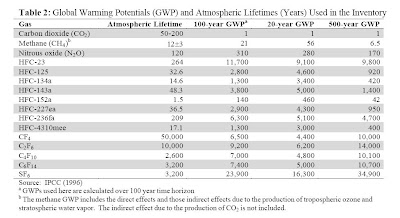How about some air cleaning, global warming fighting 'green' concrete?
A road in the small Dutch town of Hengelo is to be paved with air-purifying concrete in a trial that could lead to a breakthrough in the fight against rising pollution, scientists said Wednesday.
Check out the link below...
Dutch town tests 'air-purifying' concrete (Update) from PhysOrg.com
As such the link just references Nitrogen Oxides but there are a few types of Nitrogen Oxides.
Nitrous Oxides (N2O) are one of the nastiest, yet common, green house gases. N2O persists in the atmosphere longer and has 310 times the Global Warming Potential than Carbon Dioxide.
(Ref: Green house gases and global warming potential values, excerpts from the Inventory of U. S. Greenhouse emissions and sinks: 99-2000)
N2O gets in the air especially by the use of synthetic and manure fertilizers; fossil fuel combustion, especially from mobile combustion; adipic (nylon) and nitric acid production; wastewater treatment and waste combustion; and biomass burning.
The primary climate change effects of NOx are indirect and result from their role in promoting the formation of ozone in the troposphere and, to a lesser degree, lower stratosphere, where it has positive radiative forcing effects. Additionally, NOx emissions from aircraft are also likely to decrease methane concentrations, thus having a negative radiative forcing effect (IPCC 1999). Nitrogen oxides are created from lightning, soil microbial activity, biomass burning – both natural and anthropogenic fires – fuel combustion, and, in the stratosphere, from the photo-degradation of nitrous oxide (N2O). Concentrations of NOx are both relatively short-lived in the atmosphere and spatially variable
The atmospheric concentration of nitrous oxide (N2O) has increased by 16 percent since 1750, from a pre industrial value of about 270 ppb to 314 ppb in 1998, a concentration that has not been exceeded during the last thousand years. Nitrous oxide is primarily removed from the atmosphere by the photolytic action of sunlightin the stratosphere.
If the actual testing proves that the concrete can take care of the N2O as well then that would be something really 'cool'.
I will be waiting to hear about the testing and results...
[...]



